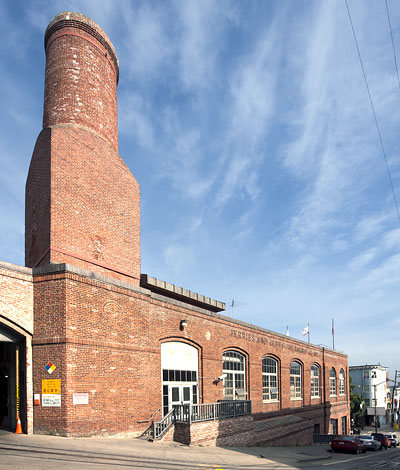San Francisco Landmarks
Cable Car Barn
1200 Mason Street at Washington
Built 1887
When you're climbing halfway to the stars, please don't call your little cable car a streetcar or a trolley.
To learn why cable cars aren't trollies, click over to the official San Francisco Cable Car Website.
The Cable Car Barn is open to the public and totally worth a visit.

Some fourteen cable car barns and power houses once served various lines in San Francisco. This is the only survivor.
Although cable propulsion was invented in England early in the 19th century, its successful application did not occur until Andrew S. Hallidie's inaugural run up the Clay Street hill, beginning at Portsmouth Plaza, on August 1, 1873.
The great and worldwide interest generated by San Francisco's success lasted well into the 1890's to be displaced by the advent of electric railways. In the 1880's when cable car systems were at the height of their popularity, they existed in a score of cities from Edinburgh to Melbourne and from Brooklyn to Constantinople; but San Francisco was unquestionably the world's cable car capital then, and it has fortunately remained so to the present.
The Washington and Mason Cable Car Barn was constructed from 1885 to 1887 near the site of the original spring and reservoir of the Spring Valley Water Company, which along with other private companies served the city's needs during the 1850's. The building at first housed the cable cars and propelling machinery for the Powell Street Railway Company, which merged into the Ferries and Cliff House Railway Company in 1887 and after a series of further mergers became the property of the Municipal Railway in 1944.
Power was supplied to the engines from steam boilers until 1906, after which the system was converted to electric motor operation. The original three-story building was in large part destroyed by the Great Fire that followed the 1906 Earthquake, but was reconstructed with two stories, preserving a similar general appearance.
A prominent feature of the building is the round chimney that sits on a squared base atop the rear of the building's Washington
Street side. Once functional, it is no longer used.
Source: Adapted from City Planning Commission Resolution 6725 dated June 17, 1971.
